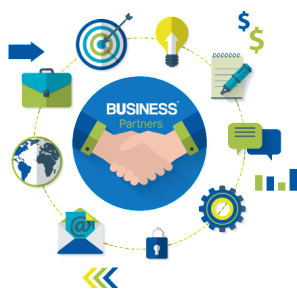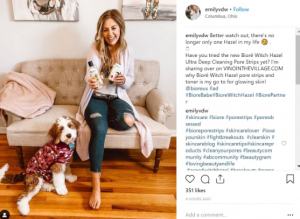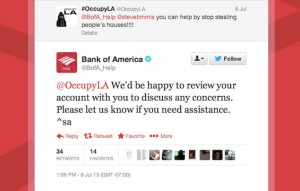B2B marketing automation specialists have become skilled at generating qualified leads from inquiries, but columnist Scott Vaughn believes that to be most effective, they need to expand their view and consider the entire customer life cycle.

Nearly a decade into the marketing automation (MA) revolution, we’ve developed a crop of B2B marketing professionals who have built successful careers on the use of tools to nurture and develop qualified leads. “I am Eloqua- (or HubSpot- or Marketo-) certified” appears boldly on B2B marketers’ LinkedIn profiles.
With all the progress around developing data-driven and automation-equipped pros and processes, unintended consequences are beginning to rear their ugly head. We’ve developed a generation of marketers whose lens of the world starts with an inquiry and stops with an opportunity (or, in the best case, a net-new customer). It’s understandable. This is what marketing departments have coveted — the ability to generate qualified leads for sales.
Today, however, revenue expectations require that B2B marketers have complete command of the entire customer life cycle. This means developing strategies and sharpening skills related to every stage — from early engagement efforts to driving inquiries to converting prospects and accounts down the funnel to expanding business with existing customers.
In fact, word on the street is SiriusDecisions, one of the leading authorities that has risen to prominence during the marketing automation era, is recognizing the mounting problem. They’re rumored to be expanding their oft-cited B2B “Demand Waterfall” to include all the work required before an inquiry and after a new customer is secured to help marketers capitalize on the bigger business contribution.
Whether you’re a B2B marketing pro whose world revolves around your marketing automation skills or a marketing exec leading a team of marketing automation experts, it’s time to take a step back and make sure your marketing efforts are focused on a complete view of the customer revenue life cycle. Below, I’ve outlined core areas B2B marketers can concentrate on to address the unintended challenges created by the marketing automation era.
Marketing starts with awareness and credibility-building, NOT an inquiry
We simply can’t keep reaching out to inquiries and contacts in our MA database. We must constantly identify, engage and generate new prospective buyers.
The challenge is that it’s much harder to develop customers if prospective buyers aren’t familiar with your company, your solution or the problems you solve. Marketing’s job starts with building awareness and credibility. This can be done not just by advertising “awareness” campaigns, but by sharing useful information that helps prospective buyer(s) transform their organization, fill a requirement or solve a problem. Many successful marketers refer to this effort as “brand generation.”
Creative programs and educational, content-driven campaigns can be deployed to identify, engage and generate an inquiry. It can take several touches and engagements before they end up in your MA system as an inquiry or lead. This requires knowledge and creative ideas about how to effectively and efficiently generate new prospects not yet in our MA database, be it within targeted accounts or those that fit your customer profile.
Today’s B2B marketers must think beyond their marketing automation platform tools and develop programs that inject educational content out into the communities where their target buyers go for information. This top-funnel engagement effort — leveraging channels such as webinars, events and content marketing syndication — can fill marketing automation-enabled databases with targeted, prospective buyers to generate the inquiries. Consequently, this serves to amplify the effects of the powerful MA skills marketers have developed.
Marketers must be accountable for revenue, not just MQLs
Once individuals and accounts are in your database, there’s an understanding of their needs and consumption. Marketing automation-enabled strategies and tactics can then be applied to generating marketing- or sales-qualified leads (MQLs, SQLs). This is the process of identifying those leads ready to engage with your sales and/or consulting team to better understand their specific requirements and needs.
However, marketers’ work shouldn’t end with generating a qualified lead. While sales pros may be the primary driver at this later stage in the customer journey, there’s plenty to be done by marketers — often without marketing automation tools — to help advance the opportunity and close the deal. Working with sales, marketers can deliver timely information, such as business case examples and ROI tools, or personal invites to events to talk with other customers who are dealing with similar issues.
The bottom line is that marketers can’t just generate qualified leads and pass them over to sales — a common, myopic byproduct of marketers steeped in marketing automation.
Marketers must contribute to growing existing-customer revenue
We’re not nearly done yet. Revenue generation is not just about “net new” customers, despite many MA-driven marketers establishing their reputation around this capability.
Depending on your business model, the biggest revenue growth opportunity may be in serving, cross-selling and/or upselling your existing customers. This requires a set of tactics that goes beyond today’s MA systems’ thinking. This means applying the right mix of top-funnel engagement education and targeted communications around new products, services and capabilities and how they can benefit your existing customers’ business. Customer events, educational content and how-to-get-more-type of information all can be deployed across a mix of channels to turn existing customers into bigger customers (and often increase company profitability).
This customer-revenue mandate is accelerating as executives’ expectations of marketing shifts beyond qualified leads and pipeline to generating revenue via “land and expand” customer strategies.
B2B marketers’ opportunity is around knowledge of and contribution to customer life cycle revenue
The reality is that long-term customer-revenue success requires a 360-degree view of both the customer and marketing-plus-sales processes. Marketers — especially those who have benefited from the marketing automation era — can easily become too focused on the inquiry-to-qualified-lead process. B2B marketers must master the art of initial engagements, brand generation, winning a customer and continuously earning customers’ business via advocacy and upsell/cross-sell. This is the big win for B2B marketers from any era.
Some opinions expressed in this article may be those of a guest author and not necessarily Marketing Land. Staff authors are listed here.
Marketing Land – Internet Marketing News, Strategies & Tips
(46)








